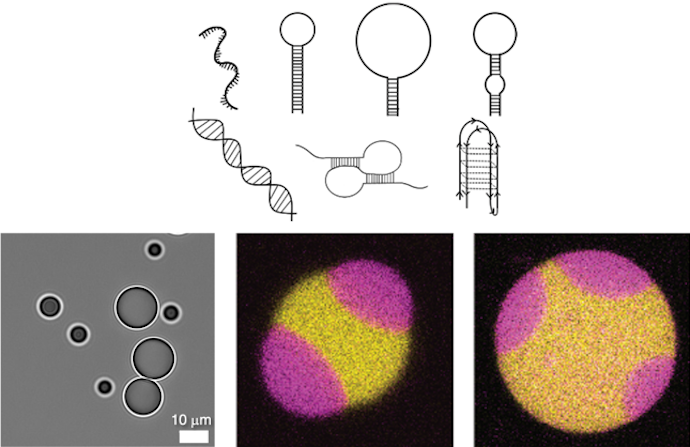Top: Designed DNA structures of varying charge density and flexibility. Bottom left: Coacervate droplets formed from 1 DNA structure. Bottom middle/right: Binary droplets formed from a model system with 2 DNA structures.
Intellectual merit: Complex coacervation is a process in which oppositely charged macro-molecules in solution condense into dense liquids. While primarily driven by charge effects, other macromolecular traits are likely to have strong effects. This Seed project leverages modern tools of DNA sequence control and biochemistry to study the fundamental physical principles underlying coacervation, with a specific focus on the role of polymer charge density and flexibility.
Broader Impacts: Understanding coacervation will impact technological applications, e.g. in food and pharmaceutical science. Further impacts occur in biology, where biomolecular coacervates form a substrate for key processes within living cells, and in origins-of-life research, where coacervates are plausible candidates for early gene-protecting ‘protocells’.
